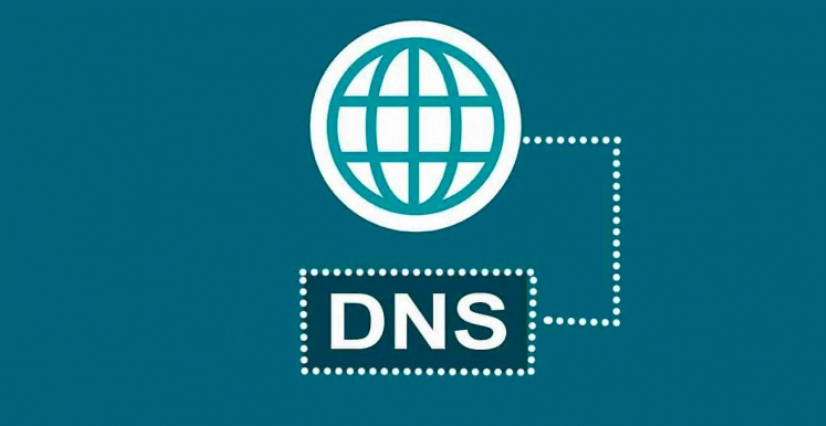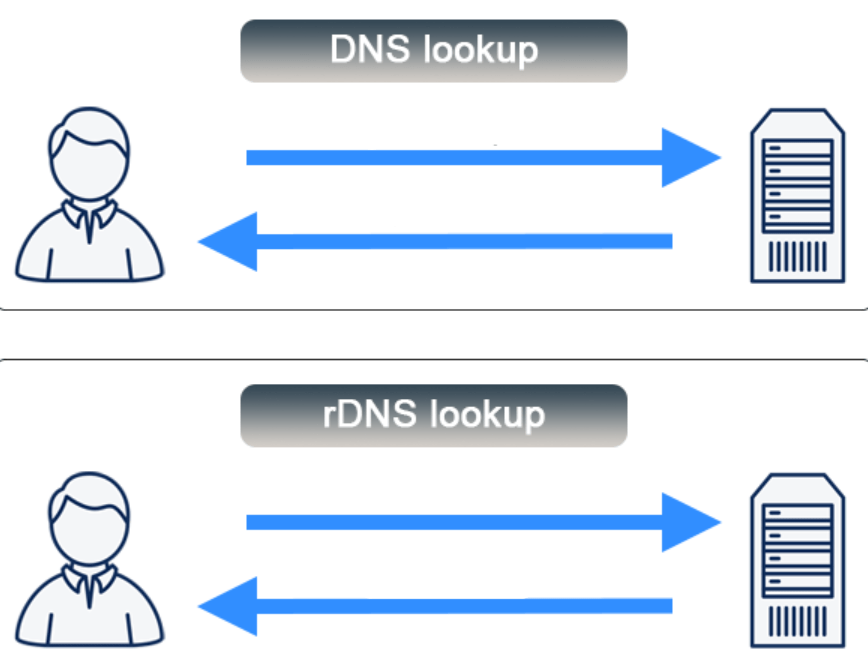In the wide open of the World Wide Web, the Domain Name System translates domain names to IP addresses. However, another side of DNS is only considered sometimes: reverse DNS. In this blog article, the author will introduce what Reverse DNS is and how it operates to uncover its workings and its tremendous importance in the World Wide Web.
Understanding the Concept of Reverse DNS
Reverse DNS (rDNS) is the mirror counterpart to the conventional Domain Name System (DNS) operations, performing an essential but often understated role in internet communication and security. This is one of the most crucial procedures that requires the conversion of an IP address in the computer to a domain name that is easily understood by man in a way that is opposite to the usual functioning of the DNS.
Unlike standard DNS, which assists users in reaching their desired online destinations by translating domain names into IP addresses, reverse DNS delves into the IP realm to retrieve its associated domain name. This reverse lookup is very essential in so many verification and security processes that enable one to obtain the requisite domain name of the initiating IP address.
Reverse DNS adds another layer of connection between an IP address and a domain name making it more open and distributing the blame during sharing of information. For this reason, it has become a basic building block in the design and construction of what is today known as the Internet, primarily because it offers a history of the domain’s identity, behind those IP addresses.
Besides, it also assists in the management and support of the network and security since it enables one to check the source of the communication which puts reverse DNS as a critical tool for a healthy and secure World Wide Web system.
How Reverse DNS Lookup Differs from Forward DNS Lookup
In the digital landscape, DNS lookups are essential for navigating and connecting within the Internet’s vast network. However, forward DNS lookup and reverse DNS lookup serve distinct functions and operate through different mechanisms. Forward DNS lookup is the process we engage in more frequently, where a user’s request to access a website by typing a domain name is translated into the numerical IP address of the server hosting that site. This translation allows users to easily access web resources without remembering complex IP addresses.
Conversely, reverse DNS lookup takes an IP address as its starting point and seeks to find the domain name associated with it. This process is less commonly encountered by the average internet user but is vital for administrators and services that rely on verification and security protocols. For instance, an email server might use reverse DNS lookup to verify that an incoming message comes from a legitimate domain, reducing the risk of spam or phishing attacks.
The only difference is that one is done from the host towards the server, whereas the other is done in the reverse direction. Still, the former DNS lookups are usually used for internet security and communication, while the latter is not. Whilst the process of forward DNS lookup enables connection to Web resources, reverse DNS plays a vital role in verifying such connections by establishing that the IP address is genuine and bound to a particular domain name.
The Technical Process Behind Reverse DNS Resolution
To delve deeper into the mechanics of reverse DNS resolution, it’s essential to understand the role of the Pointer (PTR) record within the DNS architecture. PTR records are distinct from the more familiar A and AAAA records that directly associate domain names with their respective IPv4 or IPv6 addresses. In contrast, a PTR record creates a bridge in the opposite direction, linking an IP address to its canonical hostname.
Initiating a reverse DNS lookup starts when a request is sent to query an IP address’s associated domain name. The IP address is first reversed and appended with a particular domain – in the case of IPv4, it’s “.in-addr.arpa”, and for IPv6 addresses, “.ip6.arpa”. This modified query is then directed towards the DNS server responsible for the IP address range in question.
Upon receiving this query, the DNS server searches its records for a matching PTR record for the reversed IP address. If a valid PTR record exists, the server responds with the domain name contained within that record. It’s through this procedure that the initial IP address is successfully resolved back to a human-readable hostname.
This reverse lookup process is less commonly performed than its forward DNS counterpart but is instrumental in contexts where verifying the authenticity of an IP address is crucial. Such verification processes hinge on the accurate configuration and maintenance of PTR records to ensure the integrity and reliability of reverse DNS lookups.
Practical Applications and Use Cases for Reverse DNS
Technically speaking, Reverse DNS is not only limited to the process of validating the email server’s worthiness but has many or rather practical uses in different fields. One fascinating example is the use by advertisers of reverse DNS to evaluate the authenticity and the receptiveness of web traffic to better place their advertisements.
Network administrators employ a reverse DNS while producing performance analysis of a network and identifying domains that are overconsuming traffic and might contain sources of network invasions. Some of the sub-domains in cybersecurity, and particularly in the identification of sources of the attested event involving reverse DNS, are the identification of sources of a particular event through IP to domain name mappings.
From the business perspective, the knowledge of reverse DNS can help to avoid situations when the business’ domain has been linked to spam or other malicious activities unintentionally by having improper reverse DNS settings that do not correspond to the business’ image. Moreover, reverse DNS checks are indispensable components of the processes of many protocols that involve the verification of an IP address’s connection to a domain enhancing the security and stability of the internet connection in numerous applications.
Security Implications and Benefits of Reverse DNS
The role of reverse DNS in boosting Internet security cannot be over-emphasized since it offers a strong defensive wall against several threats. Hence, making it possible to check the origin of a particular IP address, reverse DNS is a security check that makes it possible to minimize the occurrence of incidences of identity fraud, and all the other related ills, thus making commerce over the internet secure.
This authentication process is beneficial in emails since it can easily filter out the actual sender from the fake ones. In the same regard, reverse DNS is helpful in overall security by enabling quick identification of sources belonging to the class with such behavior. If an IP address has been seen to be involved in some suspicious activities, then security personnel can easily use reverse DNS lookup to get the domain address connected to it and hence be in a better position to take the necessary actions.
This capability not only assists in responding to imminent threats as well but also contributes to enhancing the threat intelligence repositories which help enhance the overall stability of digital systems from cyber threats and cyber-attacks. Thus, reverse DNS becomes a useful tool for combating one ceaseless conflict over the stability and safety of Internet communications.
Setting Up Reverse DNS for Your Domain
To initiate the process of establishing reverse DNS for your domain, it’s essential to engage with your Internet Service Provider (ISP) or hosting provider, as they typically maintain control over the IP addresses allocated to your servers. This partnership is essential because reverse DNS settings are organized on the IP level, making them different from the DNS settings that domain owners can often change.
The first step involves identifying the IP addresses associated with your domain that require reverse DNS configuration. Once identified, you must request your ISP or hosting provider to create PTR records for these IP addresses. Each PTR record will map an IP address back to your domain name, effectively establishing the reverse DNS lookup capability for your domain.
It’s essential to provide your ISP or hosting provider with accurate information regarding the domain names and IP addresses. Miscommunication or errors in this phase can lead to incorrect PTR records that disrupt the intended functionality of reverse DNS.
After your ISP or hosting provider has confirmed the creation of PTR records, it is advisable to verify the configuration. Utilizing online tools designed for DNS lookup can help confirm that the reverse DNS setup correctly resolves your IP addresses to your domain names. This verification step is pivotal in ensuring that your reverse DNS is configured correctly, bolstering the reliability and security of communications associated with your domain.
Troubleshooting Common Reverse DNS Issues
Navigating the complex world of reverse DNS setup can sometimes lead to operational hiccups that affect the efficacy of your network’s communications. Among the frequent problems encountered are incorrectly configured PTR records, which can result in failed verifications or misidentified domains. These errors often stem from simple typographical mistakes or misunderstanding the required format.
Additionally, DNS caches, which store resolved domain names temporarily to speed up future requests, might hold outdated information. This can cause a lag in recognizing newly updated PTR records. A typical problem is when the IP address and the domain that belongs to it are not always equivalent, which may lead to the domain being considered suspicious or unreliable.
To prevent and cope with these problems, administrators should regularly check the PTR records in their systems for correctness, clear the DNS cache to get updated information, and ensure all IP addresses are correctly resolved in the domain they are associated with. Immediate and effective action in these areas will go a long way in ensuring the stability and continued effective operation of reverse DNS.



